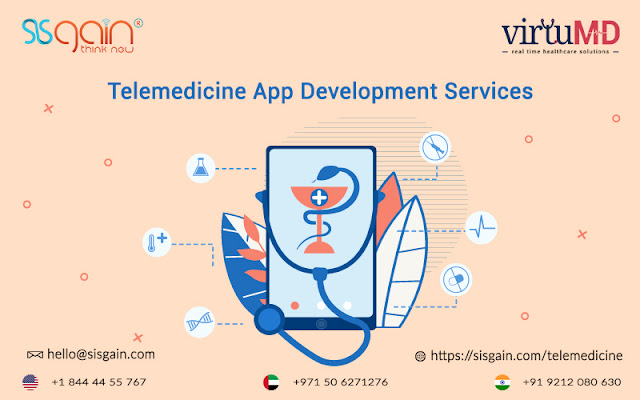Overview of the Remote Patient Monitoring system
At this time last year, many patients and physicians in California were using telehealth and remote health monitoring devices for the first time. When faced with COVID-19 and the need to keep patients out of the hospital and providers safe, healthcare firms turned to technology. They created digital projects in a couple of months, if not weeks, that would have taken years in the past. They used telehealth techniques to treat people who hadn't been considered before.
COVID-19 Influence on Remote health Monitoring system
We've learned a lot since early 2020. Healthcare companies were forced to innovate by necessity, and they stepped up to the plate, introducing telehealth programs in new areas of the hospital and for a wide range of patient demographics. Beyond COVID-19, which patient groups will gain the most from remote monitoring healthcare in California? Where will telehealth services continue to play an important role in healthcare delivery?
In Atlanta, remote health monitoring devices are often employed in home and chronic care management. It aids in the recovery of patients at home. It's utilized after patients have been released from the hospital. It improves their engagement and self-symptom management, reducing readmissions and disease exacerbations in the future. Many of Georgia's best remote patient monitoring firms have employed telehealth and remote patient monitoring to reduce readmissions, save money, and boost patient satisfaction.
Patient Populations that Can Benefit from Remote health Monitoring system
Let's take a look at four patient categories that have benefited greatly from Atlanta's remote patient monitoring system.
1- Hospital at Home- The notion of a hospital at home is fast gaining traction across the country. It helps save money by diverting patients away from the emergency department and reducing hospital stays. Patients get hospital-level care at home, allowing the provider to provide a convenient option that meets the patient where they are. Health systems are increasingly resorting to the hospital at home as an alternative to in-person care as a result of the population explosion and the associated demand for hospital capacity.
The doctor may track the patient's symptoms in real-time by incorporating a remote patient monitoring system in California into the hospital. It provides video consultations and ensures that patients take their medication as directed. It makes it easier for both the doctor and the patient's caregiver to include specialists in the treatment plan.
The doctor may track the patient's symptoms in real-time by incorporating a remote patient monitoring system in California into the hospital. It provides video consultations and ensures that patients take their medication as directed. It makes it easier for both the doctor and the patient's caregiver to include specialists in the treatment plan.
2- Oncology- It is difficult for cancer sufferers to obtain healthcare services. It allows the patient and the doctor to communicate through the internet. RPM makes it easier to get treatment. Many cancer patients require many visits and close physician care. Top Georgia telehealth and remote patient monitoring firms provide a holistic perspective of a patient's health, allowing clinicians to monitor for symptom worsening and escalation and intervene as required.
3- Hospice and palliative care- For hospice and palliative care patients in Atlanta, remote patient monitoring systems are essential services. It reduces patient anxiety by providing expanded linkages and tools for caregiver involvement.
The remote patient monitoring system in California may provide an added layer of connectivity and support for patients and their families. For hospice patients reaching the end of their life or palliative care patients with difficult symptoms, telehealth provides for real-time connectivity, symptom assessments, prescription reminders, and education.
4- Pregnancy/Postpartum- Remote monitoring healthcare might be an excellent resource for prenatal and postpartum women, allowing them to get therapy quickly and conveniently from the comfort of their own homes.
A practitioner can use telehealth to keep an eye on a pregnant woman with gestational diabetes, hypertension, or multiple births who has gestational diabetes, hypertension, or multiple births.
The doctor may be able to make proactive care decisions with increased knowledge. They make certain that if a problem emerges or the lady is in danger, the proper escalation is carried out.
How does a remote patient monitoring system provide unique Needs to Each Patient?
The key to remote patient monitoring, regardless of the patient group, is to use the right technology at the right time and in the right place. To meet their individual needs, various patients require different equipment. An effective digital patient engagement plan requires determining what those needs are and which technologies would best serve your patients. Patients must also be comfortable with the technology and eager to incorporate it into their daily routine.
A wide range of patient groups might benefit from the services of top remote patient monitoring firms in Georgia. Healthcare firms must continue on their journey of innovation to effectively offer care in this patient-centric environment.
SISGAIN provides the best remote patient monitoring system in California. This system proved beneficial to healthcare providers, patients, and doctors.




Comments
Post a Comment